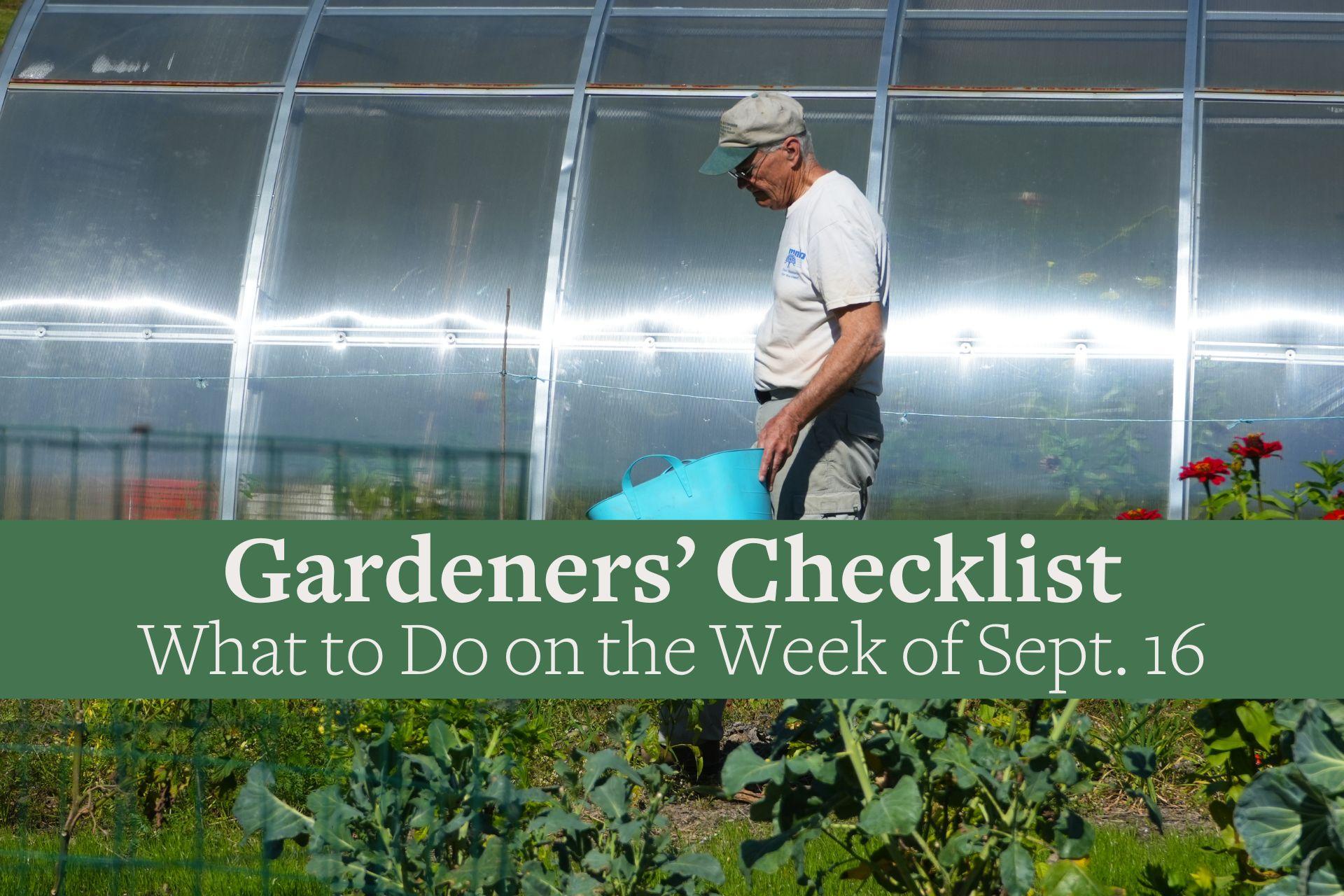You are here
Gardeners Checklist: Here Is What to Do on the Week of Sept. 16
Gardeners Checklist: Here Is What to Do on the Week of Sept. 16
By Ron Kujawski
* Don’t panic if you see the innermost leaves of pines, spruce, rhododendrons, mountain laurel and other evergreens turning brown and dropping. This is a normal occurrence on evergreens. In fall, evergreens shed their oldest set of leaves but do retain the current year’s foliage. On the other hand, if browning extends into this year’s leaves, hit the panic button but gently. Begin an investigation of possible causes.
* Sort through harvested fruits and vegetables, segregating those that are damaged. If mold or decay has not set in, consume or preserve these quickly. Some of our tomatoes have cracks in them. We pick these as soon as cracks are noticed and run the fruit through our juice mill to make tomato juice which is then canned for winter use. Home-squeezed tomato juice is a great base for soups.
* Get started on planting spring flowering bulbs. Keep in mind that bulbs cannot tolerate poorly drained soils; plant bulbs only in well-drained sites. Spring bulbs prefer a sunny location but most can take light shade or partial shade.
* Focus on planting deer-resistant spring bulbs if deer browsing has been a problem in the past. Most everyone knows that deer do not munch on daffodils. Still, deer also tend to avoid alliums, striped squill (Puschkinia libanotica), Fritillaria, glory-of-the-snow (Chionodoxa), squill (Scilla), grape hyacinth (Muscari), and snowdrops (Galanthus). I’ve seen crocus listed as deer-resistant but I wouldn’t bet on it. Besides, if deer don’t eat your crocus, rabbits will.
* Cut back on the frequency of watering for Thanksgiving and Christmas cactus. Place the plants in a cool room near a north or east window. Cool temperatures and infrequent watering will induce flower bud development on these plants.
* Harvest winter squash when the skin is hard enough to resist being punctured when poked with your thumbnail. Apply the thumbnail test to pumpkins as well. Pumpkins keep best if cured for about two weeks at temperatures of 80 degrees F.
*
This is the ugly season in many gardens. It’s the time when the wear and tear of weather, voracious insects, and pervasive diseases are most visible on plants. Slugs and snails are still chewing holes in hosta and cabbage leaves; earwigs are munching on the flower petals of Rose-of-Sharon and late-blooming roses; leaf blights appear on everything from dogwoods and hydrangeas to peonies, roses, and tomatoes; and powdery mildew is making lilacs, phlox, squash, and melons look as if they’ve been dusted with talcum powder. As my Aunt Tilly used to say: “Woe is me. What is one to do?” Sorry Aunt Tilly, not much can be done to salvage what has already been damaged, but we can make our gardens look better through this year and help reduce the severity of such problems in next year’s garden. Start by ripping out the ugliest of annual flowers and vegetables. Move on to cutting back the stems of herbaceous perennials that are diseased. Then, rake up leaves and other debris that serve as hiding places for slugs and snails. Keep raking diseased leaves as they fall and bury these or dispose of them in a manner that they cannot serve as sources of inoculum for plant diseases next year. To put it simply, start fall cleaning in the garden. The house can wait. That groan you heard was from my wife.
Ron Kujawski began gardening at an early age on his family's onion farm in upstate New York. Although now retired, he spent most of his career teaching at the UMass Extension Service. He serves on Berkshire Botanical Garden’s Horticulture Advisory Committee. His book, Week-by-Week Vegetable Gardener’s Handbook, is available here.
Help Our Garden Grow!
Your donation helps us to educate and inspire visitors of all ages on the art and science of gardening and the preservation of our environment.
All Donations are 100 percent tax deductible.


